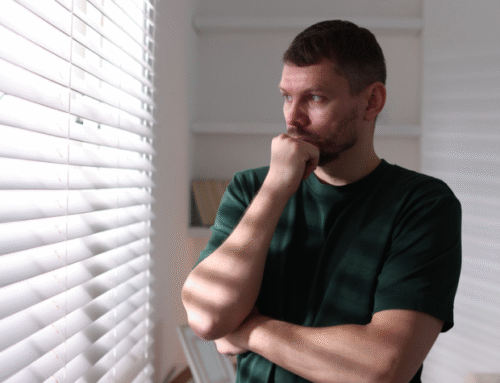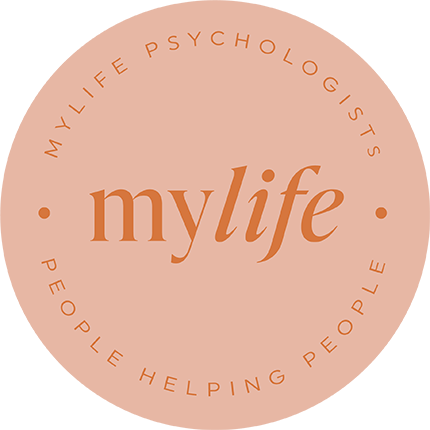Trauma bonding is a psychological phenomenon that can keep a person trapped in an unhealthy relationship long after the abuse has begun. It happens when intense emotional experiences – often involving cycles of affection, control, and fear – create a powerful but destructive attachment. Whether the bond forms in a romantic relationship, within a family dynamic, or even in a close friendship, the emotional pull can nevertheless feel almost impossible to break.
This article explores what trauma bonding is, why it happens, 10 key signs, and evidence-based strategies to heal and reclaim emotional freedom.
What Is Trauma Bonding?
Trauma bonding occurs when a person forms an emotional attachment to someone who causes them harm – emotionally, psychologically, or physically. Rather than being grounded in mutual respect or genuine love, this connection is instead sustained through intermittent reinforcement – that is, moments of affection and safety alternating with episodes of abuse and criticism. Over time, this emotional rollercoaster gradually conditions the brain to associate those brief “good moments” with love, safety, and hope.
Psychologically, trauma bonds resemble addictive cycles. The brain releases dopamine during affectionate periods and cortisol during conflict or rejection. This biochemical pattern strengthens emotional dependence, even when the relationship is damaging.
Common contexts for trauma bonds include:
- Romantic relationships involving emotional, verbal, or physical abuse
- Family dynamics with controlling or manipulative parents
- Toxic friendships or workplace relationships led by dominant personalities
What Causes Trauma Bonding?
Trauma bonding often stems from early attachment experiences and repeated patterns of reward and punishment.
- Intermittent reinforcement: The abuser alternates between affection and cruelty, keeping the target emotionally dependent.
- Fear and isolation: Threats, control, and social withdrawal limit external support.
- Low self-worth: The victim internalises blame, believing they deserve the treatment.
- Childhood trauma: Those raised in inconsistent or emotionally neglectful environments may unconsciously seek familiar dynamics in adulthood.
Over time, these dynamics erode self-esteem, blur boundaries, and create a distorted sense of reality – making it difficult for the person to see the abuse clearly or feel capable of leaving.
10 Signs of Trauma Bonding
Recognising the signs of trauma bonding is the first step toward healing. Here are ten core patterns commonly seen in trauma-bonded relationships.
-
Love Bombing and Idealisation
At the beginning, the relationship feels intoxicating. The abuser floods the victim with attention, affection, and praise – promising they’ve found their “soulmate.” This love bombing stage creates euphoria and trust.
But once emotional dependence is formed, the affection becomes inconsistent or disappears altogether, leaving the victim chasing that early validation.
-
Gaslighting and Confusion
Gaslighting is a hallmark of trauma bonding. The abuser manipulates reality – questioning your memory or emotions until you begin to doubt your own mind. Phrases like “You’re too sensitive” or “That never happened” distort truth and foster confusion, pushing the victim to rely on the abuser for clarity.
-
Constant Self-Blame
People trapped in trauma bonds often believe the abuse is their fault. After episodes of mistreatment, victims may apologise, minimise the harm, or promise to “be better.” This self-blame sustains the cycle, protecting the abuser from accountability while reinforcing the victim’s guilt and shame.
-
Fear of Setting Boundaries
Victims learn that expressing needs or enforcing boundaries leads to anger or punishment. This creates hypervigilance – a constant state of anxiety and readiness to appease. Setting limits feels dangerous, so boundaries often erode completely, leaving the abuser in control.
-
Isolation from Loved Ones
Trauma bonding often includes social isolation. The abuser may frame friends or family as “toxic” or “against the relationship.” Over time, the victim disconnects from external perspectives or support, increasing emotional dependence on the abuser.
-
Walking on Eggshells
A core sign of trauma bonding is emotional unpredictability. The victim never knows what will trigger the abuser’s anger or withdrawal. This constant tension creates physiological stress and anxiety. Even in calm moments, victims often remain hyper-aware, anticipating conflict.
-
Loss of Identity
As the abuse continues, the victim may lose their sense of self – forgetting who they were before the relationship. They might mirror the abuser’s interests, opinions, or values as a defense mechanism. Over time, self-doubt, shame, and disconnection replace individuality.
-
Rationalising or Defending the Abuser
Trauma bonds make people justify harmful behaviour. Victims may say things like, “They’re just under stress,” or “They love me deep down.” The attachment to the good memories – and hope for change – overshadows the reality of manipulation and abuse.
-
Physical and Emotional Symptoms
Chronic abuse affects both body and mind. Victims often experience:
- Anxiety, depression, or panic attacks
- Insomnia or nightmares
- Physical tension or nausea
- Numbness or detachment
These symptoms reflect the nervous system’s survival response, trapped between fear and longing.
-
Difficulty Leaving the Relationship
Even after recognising the harm, victims may feel incapable of leaving. The trauma bond creates powerful emotional addiction – mixed with fear, shame, and dependency. Attempts to leave might trigger intense guilt, loneliness, or cravings for reconciliation, often reinforced by the abuser’s promises to change or renewed affection.
How Trauma Bonding Affects Mental Health
Trauma bonding can leave lasting emotional and psychological scars. Because these relationships often erode identity and safety, survivors commonly experience symptoms aligned with post-traumatic stress, depression, and complex trauma (C-PTSD).
Common effects include:
- Chronic self-doubt and low self-esteem
- Difficulty trusting others
- Emotional numbness or dissociation
- Intrusive memories and flashbacks
- Relationship avoidance or repetition of harmful patterns
Recognising these impacts is crucial – not as a sign of weakness, but as evidence of psychological coping mechanisms developed for survival.
How to Break a Trauma Bond
Breaking a trauma bond takes time, support, and persistence. Healing is possible when survivors address both the emotional addiction and the underlying trauma that sustains it.
- Acknowledge the Bond: Awareness is the first step. Recognising the emotional pull as trauma – not love – helps reframe the relationship dynamic realistically.
- Establish and Enforce Boundaries: Boundaries can feel uncomfortable, especially when guilt arises. However, consistent boundary-setting rebuilds safety and self-trust.
- Seek Professional Support: Therapies that help break trauma bonds include:
-
- Trauma-focused Cognitive Behaviour Therapy (CBT), which challenges distorted beliefs and self-blame.
- EMDR (Eye Movement Desensitization and Reprocessing) for processing traumatic memories.
- Schema Therapy to address deep-rooted attachment patterns.
- Dialectical Behaviour Therapy (DBT) to improve emotion regulation and distress tolerance.
Therapists trained in trauma recovery can help navigate withdrawal, self-doubt, and fear of change.
- Reconnect with Safe People:Rebuilding social support lessens the abuser’s emotional hold. Friends, family, or support groups offer validation, grounding, and perspective.
- Address Trauma Bond Withdrawal: Leaving a trauma-bonded relationship can feel like withdrawal from an addiction. Emotional cravings, intrusive thoughts, or loneliness are normal. Compassionate self-care – through mindfulness, journaling, and therapy – helps regulate these feelings.
- Create a Safety Plan: If you’re in an unsafe relationship, prepare an exit strategy:
-
- Identify trusted contacts and safe places.
- Store important documents securely and pack essential items discretely.
- Save emergency phone numbers.
- Reach out to domestic violence hotlines or shelters for immediate support (see below).
Healing Beyond the Bond
Once free from the traumatic dynamic, healing involves reclaiming self-worth and identity. Survivors often describe the journey as rediscovering who they were before the abuse – and creating a stronger, more self-compassionate version of themselves.
Self-healing strategies include:
- Mindfulness and grounding: Calm the nervous system and reconnect to the present.
- Journaling: Track patterns and emotional triggers.
- Exercise and nutrition: Support recovery through body awareness.
- Creative expression: Art, music, or writing can help externalise trauma and rebuild a sense of agency.
Healing is not linear – it’s a gradual process of re-learning safety and self-trust.
When to Seek Professional Help
If you recognise signs of trauma bonding in your life, seeking support from a trauma-informed therapist can make a transformative difference. Professional help can assist you in:
- Understanding the psychological mechanisms behind the bond
- Processing grief and guilt
- Rebuilding autonomy and confidence
- Preventing re-entry into similar dynamics
Even if the relationship has ended, therapy can help heal residual attachment and physiological hyperarousal associated with past trauma.
Final Thoughts
You don’t have to face trauma bonding alone. Our clinical psychologists offer trauma-informed therapy to help survivors rebuild safety, self-worth, and independence.
If you recognise any of these signs or feel stuck in a cycle of emotional dependence, reaching out for professional support is a powerful act of self-care. Healing begins with one step toward safety.
Contact our team today to start your recovery journey.
Supports & References
- National Domestic Violence Hotline: 1800 799 7233
- 1800 Respect: 1800 737 732
- White Ribbon Australia
- Lifeline: 13 11 14
- VeryWellMind. “Trauma Bonding: Definition, Signs, and Ways to Cope”.
- CPTSD Foundation. “Recognizing and Breaking a Trauma Bond”.
- Medical News Today. “Trauma bonding: definition, examples, signs and recovery”.
- Carnes, P. (1997). The Betrayal Bond: Breaking Free of Exploitive Relationships.
- van der Kolk, B. (2014). The Body Keeps the Score.
- The Attachment Project (2024). 10 Signs of Trauma Bonding.







